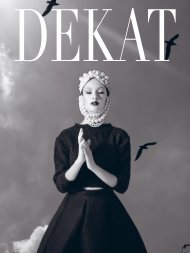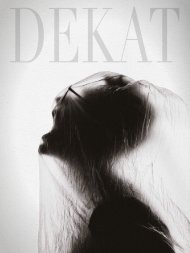1
You also want an ePaper? Increase the reach of your titles
YUMPU automatically turns print PDFs into web optimized ePapers that Google loves.
MOVEMENT IN MINDSCAPES: OUTSIDER ART IN SOUTH AFRICA<br />
Wilhelm van Rensburg<br />
Senior Art Specialist & Head Curator<br />
Strauss & Co<br />
Discussions of Outsider Art often focus on descriptive definitions, invoking the origins of the term, and expatiating on the artists’ biographies, invariably stressing their marginalised<br />
status in relation to the conventions of the Western art canon. The singular distinguishing characteristic of outsider artists is their being untrained, creating their work not necessarily<br />
for renumeration or for a white cube gallery, but in response to some sort of calling or irrepressible internal motivation or hobbyish personal compulsion. ‘Outsiders’ inevitably<br />
implies the contrasting notion of ‘Insiders’, that is, artists who have formal training, are feted in gallery and museum exhibitions and on art fairs and biennales, are selected by<br />
specialist art writers and academics, and whose work is regularly reviewed and critiqued and monographed.<br />
In South Africa, a handful of outsider artists (Jackson Hlungwani, Noria Mabasa, Esther Mahlangu, Helen Sebidi, and Alfred Thoba, largely due to two seminal exhibitions: Tributaries:<br />
A View of Contemporary South Africa Art, 1985, and The Neglected Tradition: Towards a New History of South African Art, 1988) circumvented art conventions and are now<br />
routinely represented in the South African art canon, but what about many other South African outsider artists? What insights to their creative cognition might one detect in their<br />
art? One such insight is the oscillation between the dynamism and stasis of their subject matter that characterises much of their work. The aim of this article is to traverse these<br />
two aspects in South African Outsider Art.<br />
Outsider Art, also known as Art Brut – raw or rough art – a term coined by French artist Jean Dubuffet in 1945, frequently has a ‘disquieting strangeness,’ to use Sigmund Freud’s<br />
term. It is created by artists who seem to have escaped cultural conditioning and social conformity, challenging the expected formal art educational training and other conventions in<br />
art. Outsider Art has essentially become an all-encompassing descriptive term that include numerous varieties of unconventional art, such as Folk or Vernacular Art (characterised<br />
by mainly decorative elements), Intuitive Art (as opposed to, say, intellectual, or ‘rational’ art), Visionary Art (art with a strong spiritual inspiration, such as the well-known ‘retablo’<br />
or Votive Painting), ‘Naïve’ Art (often associated with the notion of ‘primitivism’, infantilising the art of first nations – Aboriginal, Native American and San, among others, as well as<br />
that of children), Spontaneous Art (associated with unmediated psychological expressiveness), and Street/Graffiti Art (seen as work done by supposedly permissive hooligans and<br />
vandals), with all of these labels inadvertently reinforcing the status of practitioners as ‘untrained amateurs’. A well-known French children’s art magazine, called DADA, in a special<br />
edition on Outsider Art (No. 93), offers a more apt descriptor: ‘Les Singuliers de l’Art’.<br />
Despite the previously negative labelling of Outsider Art as reflecting extreme mental states or hallucinatory fantasy worlds, or referencing the artwork done by psychiatric patients,<br />
hermits and/or spiritualists, Outsider Art has much in common with Modernism. The well-known German Expressionist group, Der Blaue Reiter, embraced child-like forms and<br />
colours in their art. Dada and its global exponents similarly exhibited a child-like irreverence of societal norms. The CoBrA group of the late-1940s and early-1950s, to which Ernest<br />
Mancoba, a South African expat, and his Danish wife, Sonja Ferlov, belonged, unashamedly embraced the influence of children’s art. Artists in late-1950s Paris coined such terms<br />
as Tachisme, Art Informel, or ‘une art autre’ (art of another kind), for art that harnesses the tactility of art material in its various forms. South African artist Christo Coetzee worked<br />
and exhibited with many of these artists when he lived in Paris in the 50s and 60s.<br />
Today, much of the preferred material of outsider artists – which, incidentally, has a neat intersection with the Found Object or the Ready Made preferred by Dada artists, as well as<br />
the so-called ‘intermedia’ of the Fluxus artists of the late-1960s – has become mainstream, and they are now regularly included in publications on contemporary ceramic and clay<br />
art, as well as contemporary textile art.<br />
298 FOR THE LOVE OF LIGHT<br />
FOR THE LOVE OF LIGHT 299





